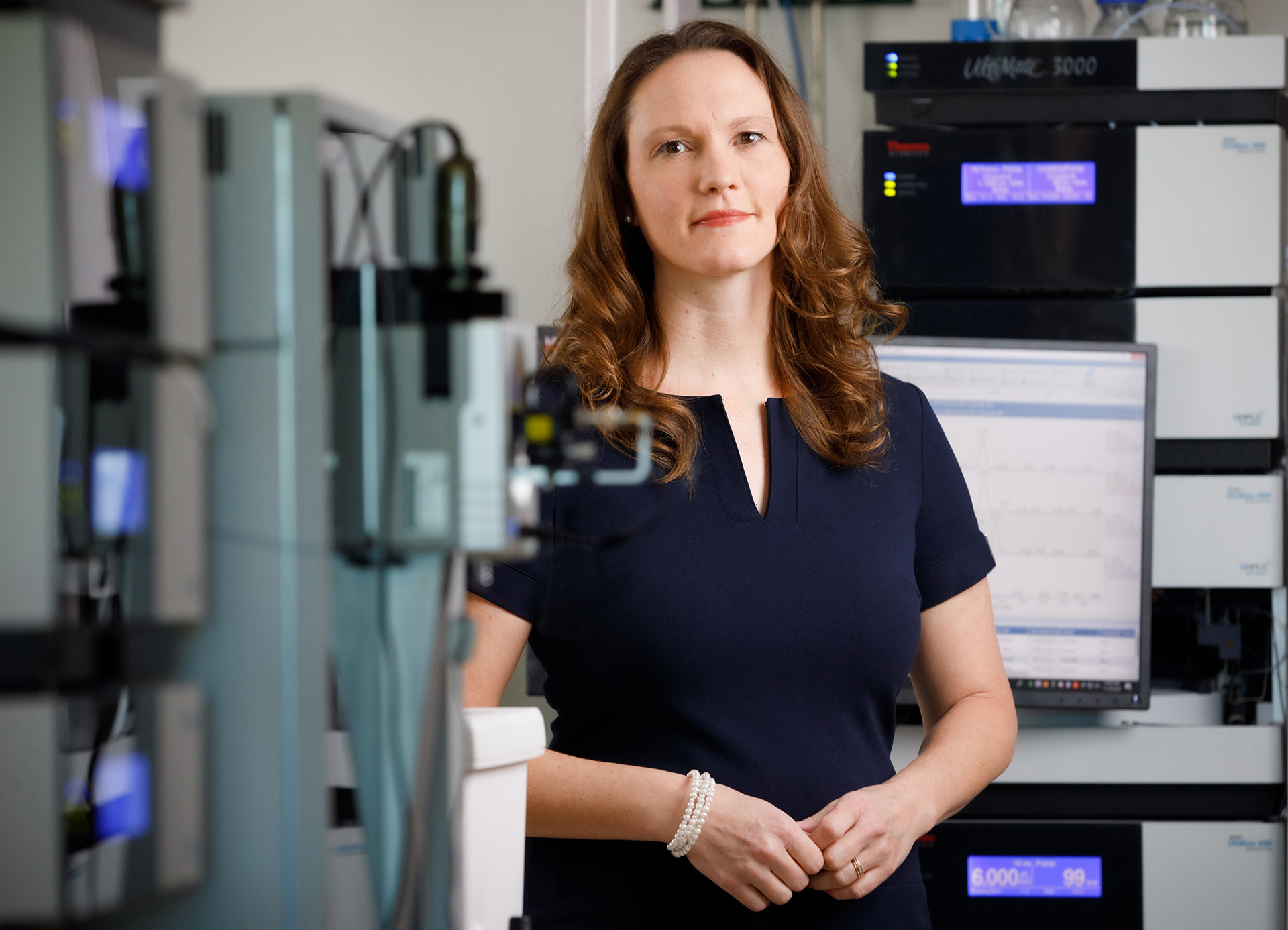When Rebekah Gundry, PhD, moved from The Medical College of Wisconsin to UNMC in 2019, a driving reason was to have more opportunity to use the technologies she was developing in her lab to make a difference in health care.
“UNMC really shines in that,” she said. “We do a lot of technology development that allows us to study cells in a way that gives us data that you can’t get by other approaches. Merging our technologies with the clinical resources available at UNMC gives us a unique edge.”
In a new paper from her lab, Dr. Gundry, interim chair of the UNMC Department of Cellular and Integrative Physiology and director of the Center for Heart and Vascular Research, and her team describe a new analytical platform, called “CellSurfer,” that allows the mapping of cell surface heart proteins. The platform, Dr. Gundry said, provides an opportunity to identify targets for more focused drug delivery to the heart, potentially allowing for more effective pharmaceutical treatment of heart-related ailments.
“The molecules that sit at the surface of every cell type in your body are generally what drug companies will go after when they are designing a drug, because those are the molecules accessible to drugs,” Dr. Gundry said. “About 80% of all FDA-approved pharmaceuticals target proteins that sit on the membrane. Unfortunately, just knowing what proteins sit on what cell type — in any part of the body — has been historically a very difficult challenge.”
The CellSurfer platform has found many formerly unidentified proteins, which may provide new targets for pharmaceutical intervention.
“That opens new opportunities for drug companies or researchers in academia to develop new drugs to target those proteins or use them as a homing device,” Dr. Gundry said, comparing the protein identification as having a street address to send the drug payload, rather than only a ZIP code.
“This is just a first piece, but it could be launched in a lot of different directions depending on interests of other basic, translational and clinical researchers,” Dr. Gundry said.
She credited UNMC and Nebraska Medicine clinicians and surgeons, including Dan Anderson, MD, PhD, chief of cardiovascular medicine, for contributing to the research.
Although Dr. Gundry’s paper focused on cardiac disease, CellSurfer can be used in other areas of the body, as well, she said.
Ken Bayles, PhD, UNMC vice chancellor for research, agreed, saying that the CellSurfer technology represents great progress for drug discovery efforts.
“It has not only led to the identification of a novel therapeutic target for the treatment of cardiovascular disease, it also can be applied to identify new targets for many other diseases,” he said.
Dr. Anderson called the technology transformational.
“In addition to being a robust platform for drug development and pharmaceutical intervention, the ‘pattern’ of cell surface proteins on a heart cell can also be used as a marker of disease and disease progression,” he said. “Thus, this new ability to identify and monitor phases of cardiovascular diseases with precision, in addition to finding new drug targets, is a very exciting application.”
Dr. Gundry is aware of the opportunities.
“This platform puts UNMC in a unique position,” she said. “The cancer researchers or drug developers can take our technology platform and apply it to other cell types to accelerate the identification of new drug targets.”

Very exciting work, looking forward to more advancements with Cell Surfer!
Thanks!!